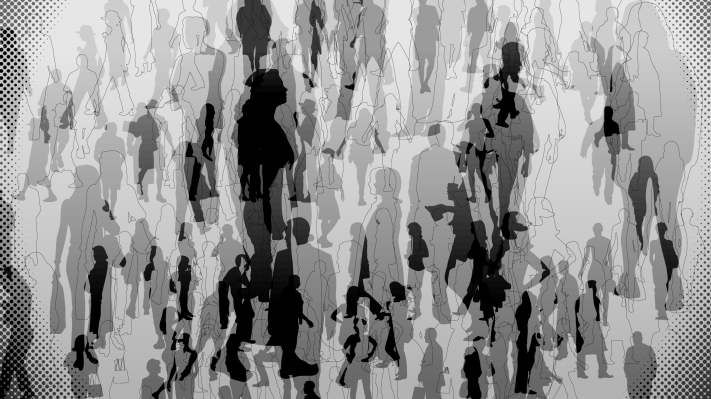When white people in tech open their mouths about diversity, I tend to brace myself. More often than not, it seems like they say something tone-deaf, outright offensive or lacking in an understanding of intersectionality.
Intersectionality is the concept that people face multi-faceted layers of discrimination as a result of their intersecting identities relating to race, gender, class, sexual orientation, etc . For women and trans people of color, the oppressive institutions of racism, sexism, homophobia and transphobia all come into play and cannot be examined separately.
But in the tech industry, white “leaders” have a tendency to talk about diversity in silos. Here are three recent examples:
On a recent episode of Re/Code Decode, Dick Costolo, in response to Kara Swisher’s broad question about diversity, makes zero mention of racial minorities, trans people and gender nonconforming people:
“A lot of men pay lip service to diversity without really doing anything about it,” Costolo said in an interview on Re/code Decode. “The real work is in developing female leaders inside these companies.”
At Dreamforce, Salesforce’s annual takeover of San Francisco, CEO Marc Benioff also failed to address the complexity of diversity:
“Overall, diversity is extremely important to us. Right now, this is the major issue [gesturing to the room/crowd]. I think when we feel like we’ve got this, you know, a little bit more under control, then I think that one is gonna surface as the major thing we’re focusing on. We’re not ignoring it, it’s something that we support, it’s something that we’re working on, but this is our major focus right now, is the women’s issue.”
And then there’s Sequoia Capital investor Michael Moritz, who seems to prioritize the hiring of women above underrepresented minorities, and spews nonsense about lowering the bar in order to hire more diverse candidates:
“In fact, we just hired a young woman from Stanford who’s every bit as good as her peers,” Sequoia Capital investor Mike Moritz said in an interview with Bloomberg, titled Sequoia’s Moritz: Looking for Women to Be Partners. “And if there are more like her, we’ll hire them. What we’re not prepared to do, is to lower our standards.”
I’m baffled as to why people say things like that. Is it because they’re racist? Sexist? Ignorant? Some sick combination of all three? Probably.
Intersectionality is not on their radar, because they’re talking about gender and race as if they’re not highly, highly interconnected for so many people. Women and trans people of color have intersectional identities as cisgender or transgender women, or as trans men and as people of color “within discourses that are shaped to respond to one or the other,” legal scholar Kimberlé Crenshaw wrote in her 1993 essay, “Mapping the Margins: Intersectionality, Identity Politics, and Violence Against Women of Color.”
Women’s groups default to white women, black groups default to black men; WoC [women of color] are erased from diversity narratives. Adria Richards
That means society can marginalize them within both gender and race. Unfortunately, intersectionality seems like it’s barely even on the radar of women who claim to be diversity champions. Even though women of color are women, they are often left out of women-specific initiatives.
As Slack engineer Erica Baker wrote recently on Medium, tech companies seem to be practicing “colorless diversity,” a term she recently coined. Colorless diversity is the notion that diversity efforts focus on and only benefit white (colorless) women (a tiny, tiny segment of diversity).
That’s exactly what happened at the Anita Borg Institute’s Grace Hopper conference. Not a single black woman was included as a headline speaker, but they were able to make room for two white men as special guest speakers. The conference did feature Janet George, Chief Data Scientist at SanDisk and Maxine Williams, Chief Diversity Officer at Facebook — both women of color — as panelists, not headline speakers.
Intersectionality is why it’s problematic when Costolo says that developing female leaders is the real work. Or when Benioff says that Salesforce is just going to focus on women. And it’s why I get annoyed when PR people pitch me about tackling diversity, but then proceed to only talk about women.

The intersection of racism, sexism, transphobia and other oppressive institutions influence perceptions and experiences of people in the tech industry. It also serves as a potential barrier to those who want to enter tech but can’t because the industry isn’t built with intersectionality in mind. In fact, the tech industry seems to turn a blind eye to it.
Yet, tackling intersectionality could be the key to solving this diversity crisis in tech, because it’s about looking at identity and experiences through multiple lenses.
Adria Richards very eloquently summed up the state of diversity in tech earlier this year: “Women’s groups default to white women, black groups default to black men; WoC [women of color] are erased from diversity narratives.”
White people, congratulations if you’ve made it to the end of this post. What I now ask of you is to read and listen to works by people of color and gender non-conforming people. Broaden your understanding of diversity. And recognize that it’s far more intricate than simply women versus men, and people of color versus white people.
Article updated to note that Janet George and Maxine Williams were on stage at the Grace Hopper conference, though not as headline speakers.
